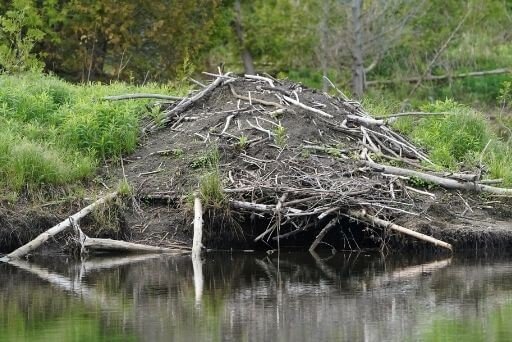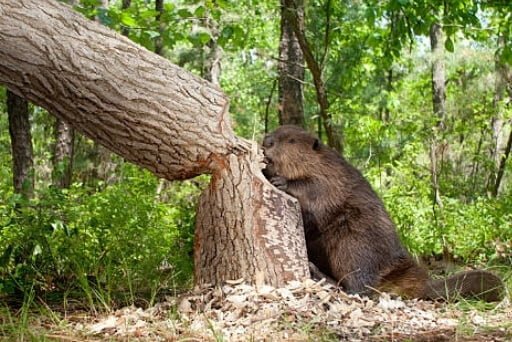The exciting life of beavers: How do they build their homes?
Beavers are the engineers of the animal kingdom. Being one of the largest rodents on the planet, beavers build their houses on streams, creeks, rivers, and lakes. They can group up to 4 feet in length and weigh about 60 pounds. Their size allows them to chop down large trees and branches to create dams in the middle of a water stream, which they call their homes. It works in a way that the dam creates a small pond within the water body, and in the middle of that pond, the beaver family constructs an island from more branches. The island is also known as the beaver lodge that acts as the perfect home for the beaver family to stay warm and safe from predators.

Surprisingly, beaver dams can be as high as 3 meters (10 feet) and as long as 500 meters (1,600 feet). An average beaver lodge houses up to 4-8 beavers. Nevertheless, up to 9-member beaver family will live in the same lodge. They use these lodges to raise their young, to rest, and protect against predators.
If you are fascinated by the world of beavers and interested in knowing how a relative of the rat, squirrel, and mouse can build such engineering marvels in the wild, keep on reading as we will explore the interesting lives of beavers – North America’s largest rodent.

How Do Beavers Build Their Lodges?
Excavating, logging, and building landscapes, beavers never rest and spend most of their lives working. “Busy as a Beaver” is an apt idiom that tells how industrious and hardworking they are. Just like humans, they are picky with where they want to construct their lodges.
- Location
Location, location, location! Just like how we emphasize the importance of location when house-hunting, beavers are also vigilant about selecting a location to build their lodge. They choose an area that is close to a reliable food source and is safe from predators. Beavers munch on twigs, bark, leaves, and numerous trees like cottonwood, willow, aspen, and alder. Thus, they find a location that has these food resources in abundance. Beavers construct their homes out in the water or close to the shore. Nevertheless, they look for a place that can be easily dug at least 5-6 feet deep. This acts as an exciting doorway that allows them to dive into the water without being seen.

- Green Construction
Beavers only use logs, branches, shrubs, and sticks to construct their lodge. They pile up logs and sticks around a water door that gives them access to the pond or river. Once the walls are constructed, they insulate their lodge using mud. Every year, they add more logs and mud to their lodge, creating a heavily fortified home. The walls can be 2-3 feet thick, protecting them from heavy tides and predators while giving them enough warmth. However, bears are their biggest enemy. Bears can easily penetrate their dwelling. But since they have an intelligently dug-out exiting doorway, they can easily escape.

- No Power Tools Needed
Beavers have extremely strong teeth that they use to cut down thick trunks and branches. They hold the limbs and branches in their powerful jaws and drag them to the construction site. Beavers are excellent swimmers, and they dive into the water to scoop some mud using their forelegs. With their strong tails, they stand erect in the water while depositing mud onto their lodge.

- Inside the Abode
The house boasts a single large room that accommodates the entire family of 4-8 members. The room can be 3-5 feet high and up to 10 feet wide. Depending on how many members have in the family, the lodge is designed and constructed accordingly. To add warmth inside the room, beavers add roots, grass, and bark. To expand their space, they simply chisel out the mud, remove the logs and twigs, and expand the space.

Some Interesting Facts About Beavers
- Beavers have large central incisors like all rodents. They are always growing, so they have to keep them trimmed by gnawing logs and bark.
- The young beavers will live with their parents until they are two years old. They help with dam building, food collection, and infant care.
- Beavers have long, flat, and broad tails that have blackish scales. They use their tails for several purposes, like to warn their family members of danger by slapping their tails against the water to create a loud noise.
- Beavers are crepuscular, meaning they wake at dusk and are active throughout dawn. They are rarely seen during the day.
- They can travel long distances in search of food and building materials for constructing their house. Beavers float trees and branches through the water body to the stream where they are building the dam.
Beavers are incredibly hard working creatures and spend most of their time constructing their lodge and protecting the younger ones.




